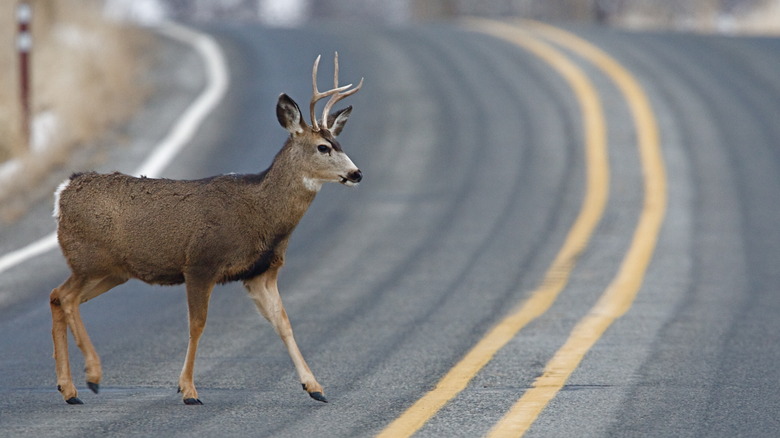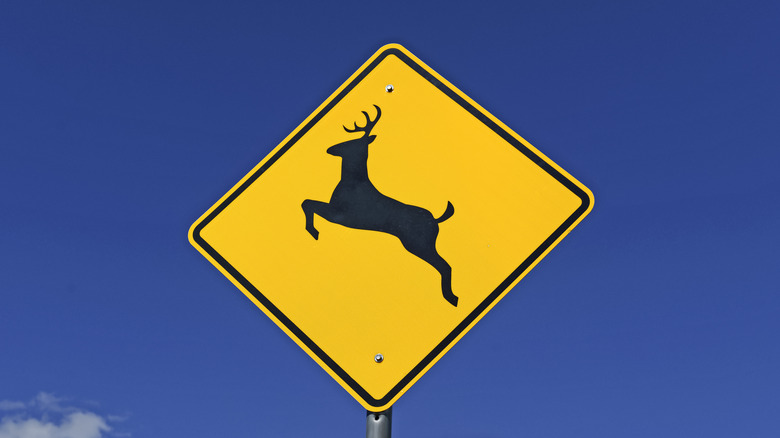Wyoming's New App Feature Wants To Help Residents Eat Roadkill
For Wyoming residents who like to know where their food comes from, there's a new option available ... and no, it's not another farmer's market. Rather, it just might be the side of a nearby highway. Wyoming became one of around 30 U.S. states, according to the Associated Press, that allow residents "to collect roadkill for food." The state even rolled out a new roadkill feature on the Department of Transportation app to help people document and claim accidentally killed animals.
Of course, not all roadkill is alike. In lightly populated Wyoming, per the AP, unfortunate roadside collision victims can include wild game like deer, elk, moose, bison, and turkey. Mule deer, however, are by far the most common. In fact, according to the Wyoming Game and Fish Department, 85% of the 6,000 wildlife collisions the state averages each year are with mule deer, and it's estimated that 4% of the state's mule deer population is killed each year in this manner.
Rules for roadkill in Wyoming
Not all animals killed in automobile collisions in Wyoming may be collected for food. In a law passed in April 2021 approving the collection of roadkill by residents, bighorn sheep, grizzly bears, gray wolves, mountain goats, and some migratory birds are off the table — literally — for Wyoming residents. There are regulations and additional rules to these legal roadkill claims as well, and as the AP notes. For example, it is not permissible to claim roadkill within the boundaries of Wyoming national parks like Yellowstone and Grand Teton, and the entire carcass must be retrieved, not just the hide or antlers. Additionally, roadkill may not be donated to charity. In other words, you claim it, you eat it.
Geotag information documented on the app by those claiming roadkill will be used by the state to collect data and to ensure roadkill has been claimed legally. As the AP observes, Wyoming is famous for its big game migration routes, and thus information collected can also be used to help determine where warning road signs should be placed that may reduce such collisions in the future.
In the meantime ... bon appétit, Wyoming!

